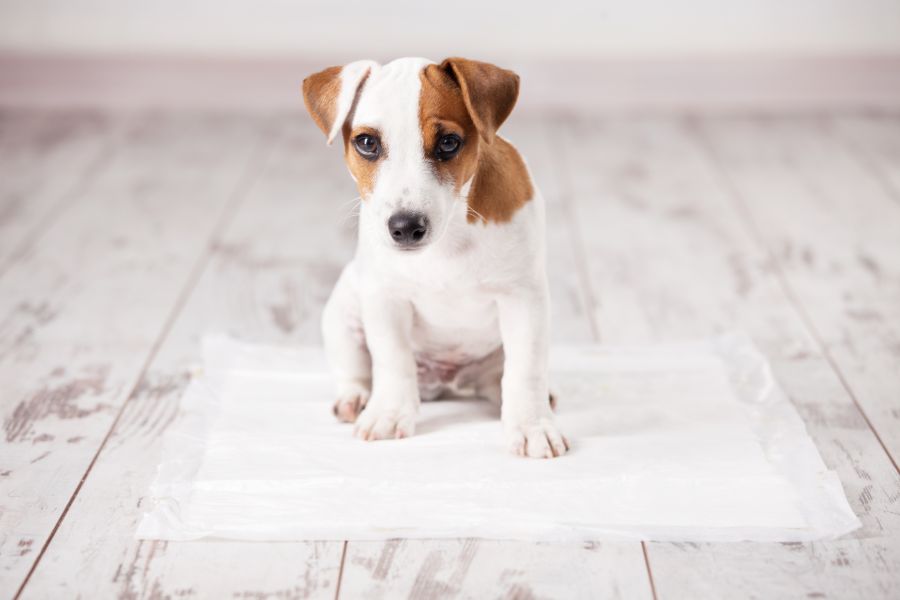Simple Steps for Successful Housetraining

Teaching a new puppy or adult dog the ropes when it comes to basic commands, the rules of the home, and of course housetraining, are all keys in raising a well adjusted dog. Training dogs also requires repetition and consistency to establish those basic training needs for life.
The team at MarketPlace Veterinary Hospital is here to give you some simple suggestions to successfully house training dogs. Let’s get started!
Laying the Groundwork for House Training Your Dog
Like children, dogs require a schedule they can rely on. This schedule serves to make dog training easier, because they feel secure with consistency and will ultimately gain a better understanding of expectations. Housetraining, especially, is a huge time and consistency commitment, especially when you have a puppy.
Start with these five basics:
- Take your dog out often – This means every 30 minutes or so with puppies, and every hour or two with adult dogs in training. You will also need to take them out soon after they eat or drink, play, or sleep, since those are key times a pet needs to go potty.
- Use rewards liberally – Punishing your dog never addresses the issue of accidents and generally results in them happening more often. Every time (and we mean every time) your pet goes where they should, reward them with a treat and verbal praise. Do your level best to ignore accidents and clean them without incident.
- Maintain meal time routines – Feed your pet at the same time each day. This will help you determine when your pet needs to go outside, as well as establishes a good routine that your pet can get used to.
- Choose your spot – Choose a place in the backyard for your dog to do their business. Return to this spot each time since they will smell where they went before and learn that it’s their personal bathroom. Keeping your dog on-leash while learning their spot will help to keep them wrangled to this spot.
- Clean accidents thoroughly – There will be plenty of accidents in the first few weeks of training. Make sure to clean these spots using an enzyme based cleaner. Never punish your pet or rub their nose in the mess. Instead, if they soil on a potty pad, rug, or towel, take the mess to their established outdoor potty spot for additional reinforcement.
Confinement and Supervision
Most pets need to have a crate while they learn the ropes. If you don’t have a crate, you can confine them to a small area that can be penned off using a pet pen or baby gates. Make the space as comfortable as possible, mimicking a small den. This will keep your pet from soiling in the space, since dogs do not want to make a mess where they sleep.
Place a bed, toys, a dental chew, and other favorite things inside. Plan on keeping your pet there while you attend to other things, making sure they are not in a pen or crate for more than a few hours at a time. To further entice your dog to want to spend time in the crate, feed them their meals when they’re inside.
Supervise your pet by keeping them next to you by using a leash or baby cord attached to the collar for a hands free level of supervision. Any time your dog stops and sniffs or begins to circle, exclaim, “Outside!” and take them out to their spot immediately. Reward, reward, reward after every successful potty.
Questions About Housetraining? Call Us!
We know that raising a pup can have its moments of aggravation, but with the right tools, your pet will have the important skill for life. Housetraining is a process that does require patience, consistency, and time. By using positive dog training methods with the right rewards, most aspects of dog training can be met with success.
For more information on how housetraining can be made easier, please call us. We are here for you and your four-legged pal.

